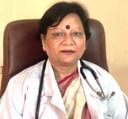All About Breast Cancer
Breast cancer is a type of cancer, which occurs due to the development of cancerous cells in breasts. Women are usually affected by breast cancer and breast cancer is one of the most common forms of cancer after skin cancer. Usually fatal if not diagnosed in its early stage, breast cancer is a very serious medical ailment. Read on more to find all about the different symptoms, causes, preventive measures and treatment of breast cancer.
Symptoms: Breast cancer has few distinct characteristics and if you have a few or all the following symptoms you could be more likely to suffer from breast cancer.
- The formation of a lump in your breast, which is different from the surrounding tissue and usually more thickened.
- The discharge of bloody fluid material from the nipples.
- Sudden change of the size, shape and appearance of the breast.
- Certain distinct changes to the skin over the breast for example an indentation in the skin similar to that of a dimple.
- Appearance of an extra nipple which is inverted.
- If the darkened area around the nipples known as the areola is flaking or peeling off.
Causes: Studies and researches remain inconclusive on what causes breast cancer. Breast cancer occurs due to abnormal division of the cells located in the breast, which over time accumulate and form lumps. They
might spread to other parts of the body. Breast cancer is caused mainly due to a complex interaction of personal genetics, environment and lifestyle choices. Breast cancer can also be caused due to genetics as about 5% to 10% of cases are due to gene mutations which pass onto generations.
Risk factors: There are certain factors, which increase the probability of contracting breast cancer. Increasing age, personal and family history of breast cancer, obesity, radiation exposure, pregnancy at an older age, postmenopausal hormone therapy are some of the factors that increase the chances of breast cancer.
Treatment: Several forms of surgical methods exist to treat breast cancer. Depending on the condition and spread of the disease a suitable surgery is performed. These include mastectomy, lumpectomy, axillary lymph node dissection and removal of both breasts. Other forms of treatment include chemotherapy or the use of high doses of drugs to destroy cancerous cells. Radiation therapy where X-rays are used to destroy the cancer cells is also effective.



+1.svg)
